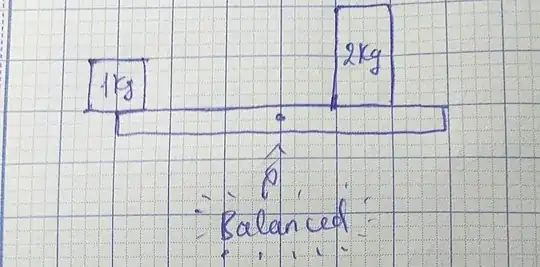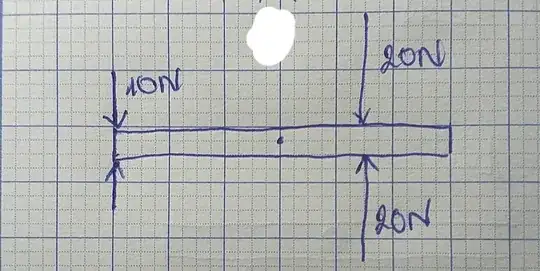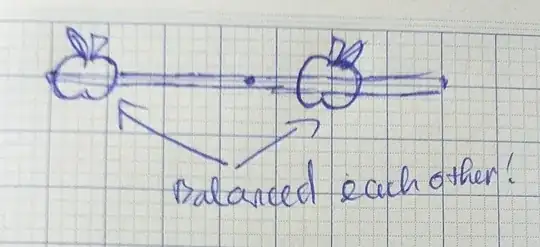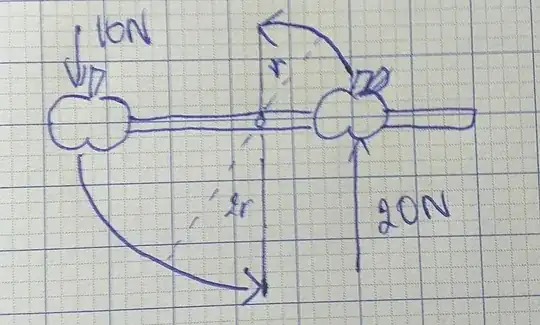Everybody knows that moment of a force increases with distance. However, there is a problem about it that makes me confused these days: Let's take a look at this picture

due to the formula M = F.d, the level will be balanced. And because the two object have no acceleration, there must be forces that counteract with their weights. so let's assume g=10m/s^2 and analyze the picture above.

So in this picture we can see that if we apply a force of 10N on 1 end of an arm, a 20N force will appear at a half length of the other arm with opposite direction. Now let's remove a 2kg object, and the force of 10N will cause the level to rotate an angle ( let's assume it rotates 90° ) in a specific time. When an arm rotate, the other will do the same thing in the same amount of time, however, the arc that a 1kg object move ( assume its attached to the level and will not fall off ) is bigger than the arc that a point at where the 20N force apply on travel. To be more easy to imagine, let's look at this picture.

Imagine we stick 2 apple on a level that balanced each other by their weights. Now we push the right apple with a force F upward, it will rotate, and the other will do the same, but with a bigger arc though they start and stop at the same time due to the equation v = r.w ( i can't type the omega symbol ) However, as I mentioned above, if we apply a force of 20N on the right apple, the left apple only feel 10N downward. With less force being applied, how can it move faster than the right apple?

this is my first article, if it has any mistake or hard to understand, please forgive ><.